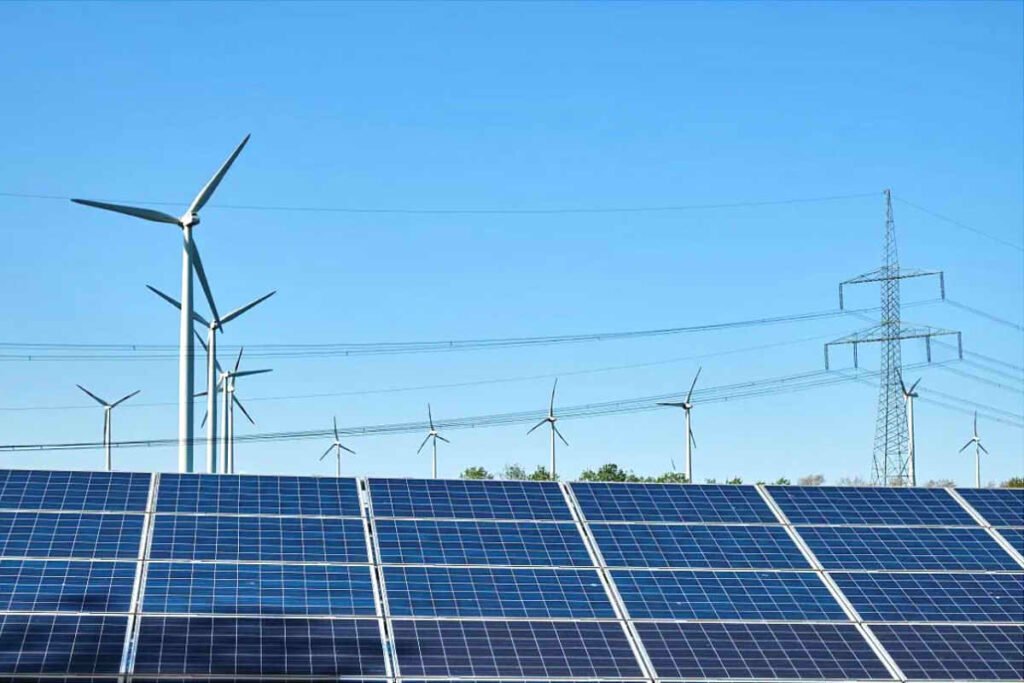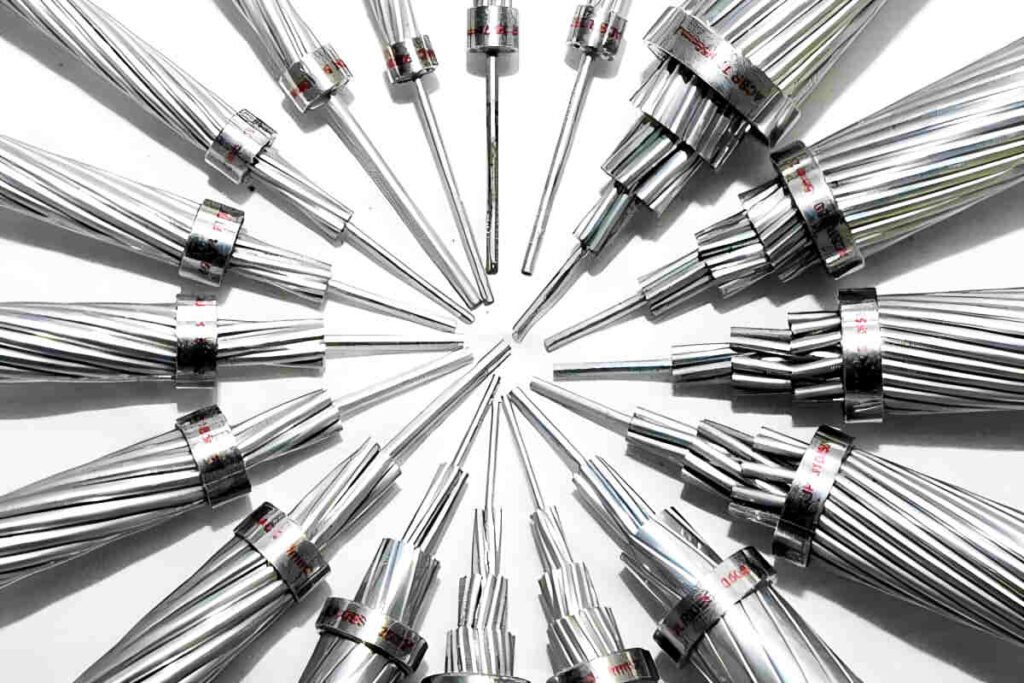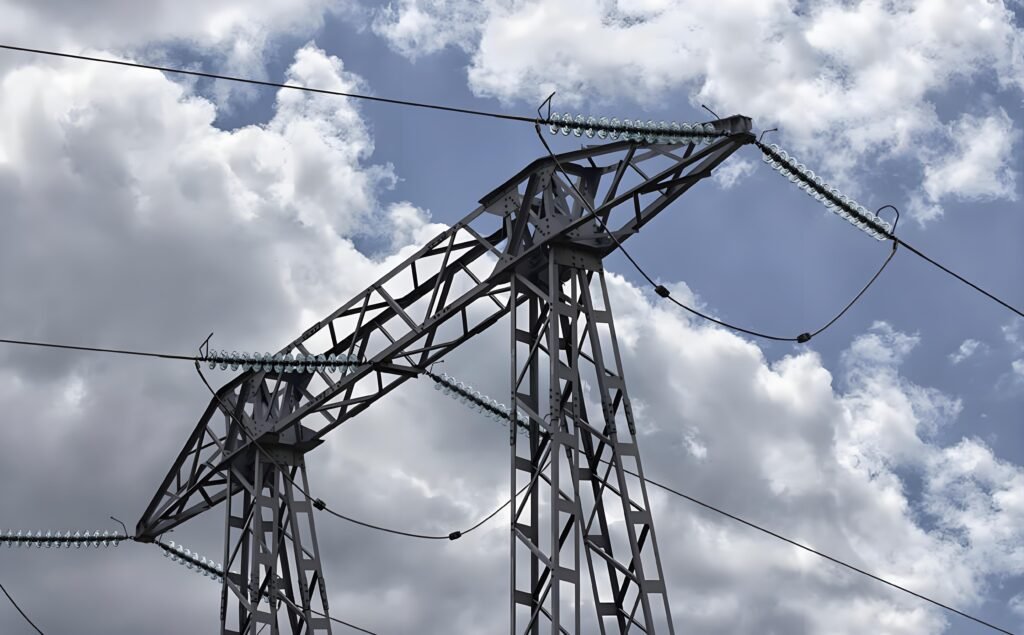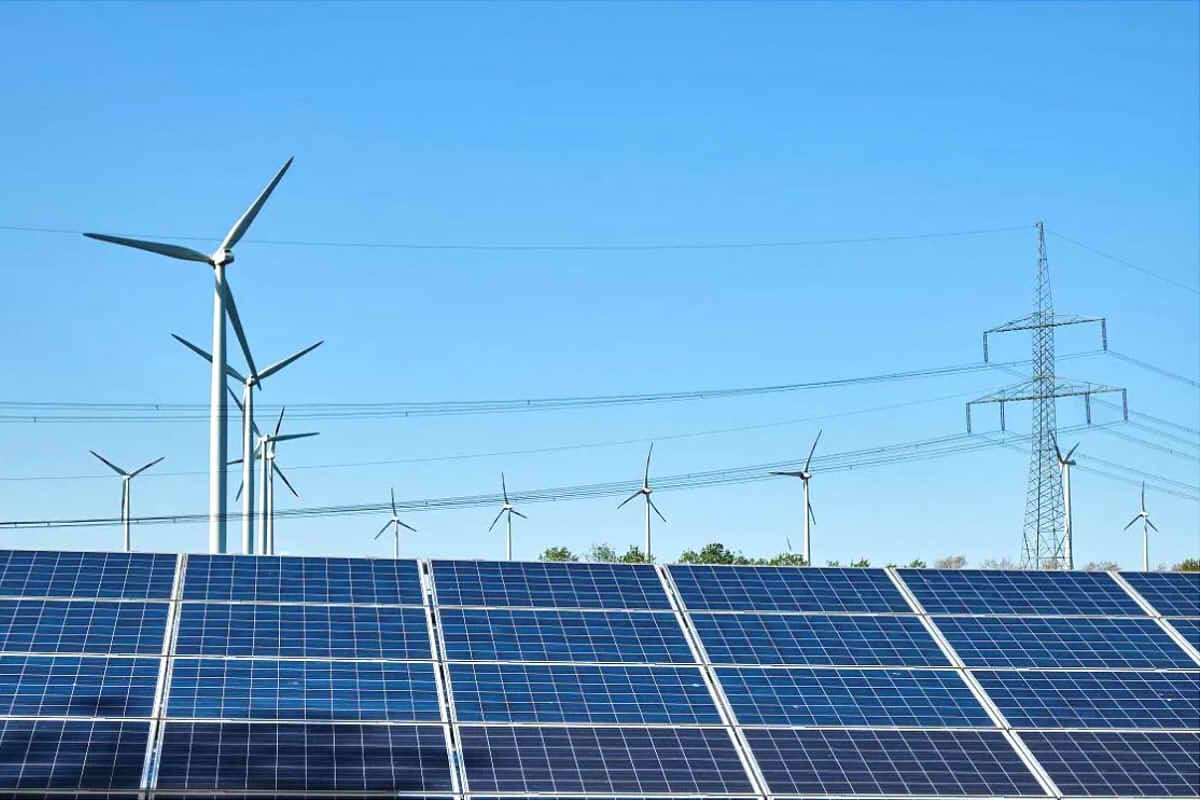The selection of aerial cable for a photovoltaic plant is a crucial aspect in the design and efficient operation of such facilities. The correct sizing of the aerial conductor directly impacts safety, energy losses, operating costs, and long-term profitability.

Photovoltaic plants are divided into centralized and distributed photovoltaic plants based on their capacity and consumption method. Centralized plants have a higher capacity and are usually connected to the grid using voltage levels of 35kV/110kV or higher, accessing a nearby 35kV/110kV substation. The 35kV/110kV substations are generally located in city load centers, at a certain distance from the photovoltaic plant. To reduce costs and improve efficiency, bare aerial cable is typically used to connect the plant to the substation.
When designing a photovoltaic plant and selecting cables, using a bare conductor with a smaller cross-section reduces the consumption of non-ferrous metals, thus lowering investment costs. वहीं दूसरी ओर, if a conductor with a larger cross-section is used, the resistance per unit length decreases, which reduces active energy losses, voltage drops, and electrical energy losses, consequently lowering operating costs. To reduce losses in the grid and improve the economic efficiency of the photovoltaic plant, maximizing energy generation revenue, it is essential to properly select the conductor’s cross-section.
Three Necessary Conditions for Selecting the Conductor’s Cross-Section
The selection of the overhead conductor’s cross-section must ensure the safety of people, reliable electricity supply, advanced technology, and reasonable economy. Technically, the selection must meet the following three necessary requirements:
Mechanical Resistance Condition
During long-term operation, the conductor will be subjected to various external forces, such as line tension, the conductor’s own weight, wind, and accumulated ice weight. To ensure the safety and reliability of the conductor’s operation, it is necessary for it to have sufficient mechanical resistance. Regulations state that to ensure the mechanical resistance of power lines, the conductor’s cross-section must not be less than the values indicated in the following table:
| Conductor Type | Through Residential Areas | Through Non-Residential Areas |
|---|---|---|
| Aluminum and Aluminum Alloy Braided Cable | 35 | 25 |
| Steel Core Braided Cable | 25 | 16 |
| Copper Cable | 16 | 16 |
Heating Condition
When current flows through the conductor, it heats up due to resistance. To prevent the conductor from burning out or aging prematurely due to overheating, and to ensure its safe and reliable long-term operation, it must also meet temperature rise conditions. That is, the maximum continuous load current flowing through the conductor must be less than the long-term safe continuous current allowed. The standard establishes the long-term safe continuous current for an ambient temperature of 25°C, as shown in the following table:
| Cross-Section / mm of | 35 | 50 | 70 | 95 | 120 | 150 | 185 | 240 | 300 | 400 | 500 |
|---|---|---|---|---|---|---|---|---|---|---|---|
| LJ | 170 | 215 | 265 | 325 | 375 | 440 | 500 | 610 | 680 | 830 | 980 |
| LGJ | 170 | 220 | 275 | 335 | 380 | 445 | 515 | 610 | 700 | 800 | – |
| LJGQ | – | – | – | – | – | – | 510 | 610 | 710 | 845 | 966 |

Corona Effect Condition
In higher voltage aerial lines, the intensity of the surrounding electric field is high. This can induce the occurrence of partial or complete discharges, increasing energy losses, generating communication interference, and accelerating equipment oxidation. To avoid the corona effect, the intensity of the electric field in the surrounding air must be reduced by increasing the conductor’s cross-section. When the voltage level is below 60kV, ए complete corona effect does not occur due to the low operational voltage and low electric field intensity. तथापि, when the voltage level is equal to or greater than 110kV, the minimum required conductor cross-section to avoid the corona effect is as follows:
| नाममात्र वोल्टेज / के.वी | 110 | 220 | 330 |
|---|---|---|---|
| Minimum Conductor Cross-Section | LGJ-70 | LGJ-300 | LGJ-2×240 |
Method for Selecting the Conductor’s Cross-Section 1: Economic Current Density Method
When considering the economy in selecting the conductor’s cross-section, it is necessary to primarily account for the investment in line construction and the annual operating costs, which are mainly based on energy losses. To ensure the economic viability of conductor selection, it should be based on the economic current density. After comprehensively considering the principles of overall benefit (investment, operating costs, investment recovery rate, depreciation rate), the most economical current corresponding to a unit cross-section of the conductor is called the economic current density. This is related to the conductor material, the utilization coefficient of the line, and the amount of investment. In practice, it is determined based on the conductor material, the hours of maximum load utilization, and the nominal voltage, as shown in the table. The cross-section selected according to the economic current density is referred to as the economic cross-section, defined as:
Sj = Imax / J
- Sj: Economic cross-section
- J: Economic current density
- Imax: Maximum operating current of the conductor under normal conditions
| T(max)/h | 2000 | 3000 | 4000 | 5000 | 6000 | 7000 |
|---|---|---|---|---|---|---|
| LJ Conductor of 10 kV or less | 1.44 | 1.18 | 1.00 | 0.86 | 0.76 | 0.66 |
| LGJ Conductor of 10 kV or less | 1.70 | 1.38 | 1.18 | 1.00 | 0.88 | 0.78 |
| LCJ Conductor of 35 kV or more | 1.86 | 1.50 | 1.26 | 1.08 | 0.94 | 0.84 |
Example of Selecting Aerial Cable for a Photovoltaic Plant

Real Scenario
For a photovoltaic cable solution, in a 35kV aerial line, a steel core aluminum braided cable with a double circuit is used, with a length of 15 km and a maximum load of 16 MW at the end. The average power factor is 0.9, and a maximum allowable voltage drop of 5% under normal conditions is permitted. The conductor’s cross-section needs to be selected.
Selection Plan
The conductor’s cross-section will be selected based on economic current density, and then it will be verified according to the three necessary conditions and the allowable voltage drop.
Maximum Operating Current:
Imax = (P / 2) / (1.732 × UN × cosθ) = (16000 / 2) / (1.732 × 35 × 0.9) = 146.63 ए
With a maximum operating current (Imax) of 146.63 A and Tmax of 2000 hours, the table indicates that the economic current density (J) is 1.65 A/mm². इसलिए, the economic cross-section is:
Sj = Imax / J = 146.63 / 1.65 = 88.87 mm of
The nearest cross-section is selected: LGJ-95 conductor, with parameters ro + jxo = 0.332 + j0.4 Ω/km and a long-term safe continuous current of 335 ए.
Verification
- Mechanical Resistance:
S = 95 mm of > Sy = 25 mm of
Meets the requirements. - Heating Condition:
Since the double circuit line can operate in a single circuit, the current in the line increases, generating more heat. This is the most critical operating scenario. In the temperature verification, this mode of operation must be considered:
Imax = 2 × 146.63 A = 293.26 ए < Iy = 335 ए
Meets the requirements. - Corona Effect Condition:
Since the line is 35 के.वी, it is not necessary to verify the corona effect condition. - Voltage Drop:
ΔU = (P × R + Q × X) × L / U = 1.80 के.वी
U% = 1.80 / 35 = 5.15% > 5%
Does not meet the requirements, so the conductor’s cross-section must be increased. The LGJ-120 conductor is selected, with parameters ro + jxo = 0.236 + j0.421 Ω/km and a long-term safe continuous current of 380 ए.
New Verification:
- Mechanical Resistance:
S = 120 mm of > Sy = 25 mm of
Meets the requirements. - Heating Condition:
Imax = 2 × 146.63 A = 293.26 ए < Iy = 380 ए
The table shows that the LGJ-120 conductor has a maximum safe current of 380 A in failure mode, greater than the maximum current in the conductor, so it meets the requirements. - Corona Effect Condition:
Since the line is 35 के.वी, it is not necessary to verify the corona effect condition. - Voltage Drop:
ΔU = (P × R + Q × X) × L / U = 1.60 के.वी
U% = 1.60 / 35 = 4.57% < 5%
Meets the requirements.
इसलिए, the selected aerial conductor LGJ-120 is suitable.
निष्कर्ष
The proper selection of the cables in a photovoltaic plant is essential to ensure both safety and efficiency. By considering the three main criteria—mechanical resistance, heating, and corona conditions—it is guaranteed that the conductor will withstand physical and thermal demands, minimizing energy losses and optimizing operating costs.
Using the economic current density method allows for balancing the initial investment and long-term costs. By adjusting the conductor’s cross-section to meet technical requirements and avoid voltage drops, efficient and cost-effective operation of the installation is ensured, maximizing its performance and durability.

